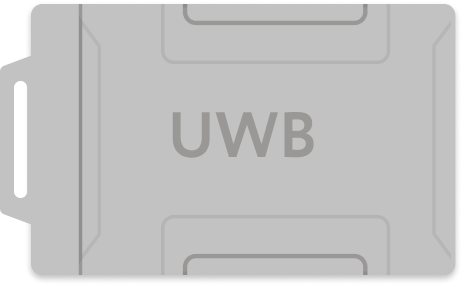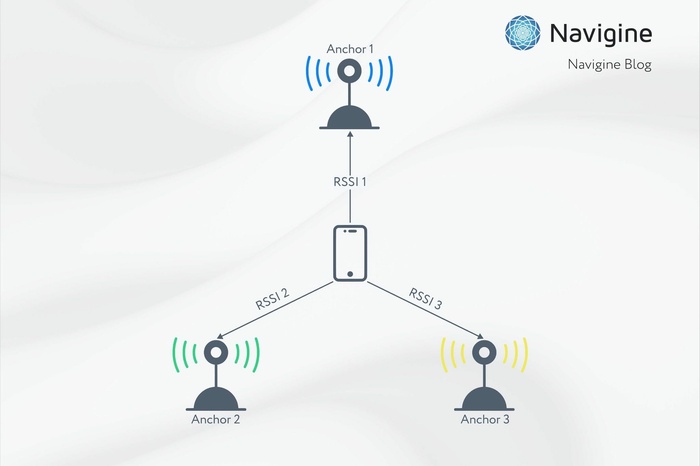Source - Ray Dak Lam
Time Difference of Arrival (TDoA) belongs to methods of localization based on applying the principle of multilateration. TDoA algorithm is based on defining the difference in the time spent on transmitting a signal between the tracking tag and the base station. The TDoA angle is calculated by mathematical processing. The method is characterized by high accuracy of localization and allows searching for objects within a long effective range.
Navigine uses Time Difference of Arrival in its work with the Ultra-Wideband technology (UWB). We apply the method for calculating the coordinates necessary for navigation and indoor tracking.
Principles of TDoA technology
TDoA is applied in Real-Time Locating System (RTLS) for exact object positioning in real-time. Using this technology, employees can easily search for assets equipped with special tracking tags which can be mounted on equipment, clothes, badges, hard hats, and other objects. At specific intervals, they emit radio signals that are detected by readers (receivers) within the zone of coverage. Then these signals are directed to the server that calculates the tag location.
At least three base stations are required for effective TDoA localization functioning. One of them is considered the main one, while the others are used for getting the time difference while transmitting the signal. All sensors have to be strictly synchronized for the system to work efficiently. Synchronization is carried out via a wireless network.
Since all base stations are at different distances from a tracking tag, data reaches them at different times. Then this difference is multiplied by the speed of light in space. The obtained values form the base for multilateration that presupposes the tag coordinate detection by the X, Y, and Z-axis. The received data is used for tag location visualization on the map or for other purposes depending on the features of the mobile application.
TDoA method: pros and cons
TDoA finds wide application in developing programs for indoor navigation and positioning. The popularity of this technology among developers is due to the following advantages:
- High accuracy – TDoA is applied for calculating the location based on the UWB technology that exceeds the accuracy of other traditional methods. For instance, if Bluetooth® LE defines the location with an accuracy of up to 1 m, Ultra-Wideband detects objects with an accuracy of up to 10-30 sm. Scalability – by means of this method one can easily scale the RTLS deployment, which allows satisfying the needs of navigation in any company.
- Low signal latency – this method can simultaneously process thousands of messages, which ensures high system reliability.
TDoA method has its shortcomings as well. Thus, one of its disadvantages is the necessity to synchronize all base stations. If it isn’t done, calculations will be incorrect. Another minus is the very complicated algorithms used by the system for defining the location of objects.
TDoA and TWR: Differences
Two-Way Ranging (TWR) is one of the localization methods that, together with TDoA, is used for exact positioning. Both ways allow positioning with an accuracy of up to 30 sm. However, they have some significant differences:
- TWR refers to more exact technologies since the dependency of the velocity of light from temperature leads to some discrepancies in TDoA calculations.
- While using UWB, the server interacts with each locator. Two-way measurement of ranging needs all anchors in the system to be connected to the main anchor.
- TWR delivers notifications between devices, which leads to restricting the number of tags suitable for transmitting signals within the refresh rate range.
- TWR doesn’t require the synchronization of base stations, which makes the technology more reliable.
- The UWB tag localization requires two-way ranging the necessity to exchange nine messages, which reduces the battery life.
Every method of localization has its pluses and minuses. TWR is more reliable but the TDoA geolocation method of local positioning has a longer time of autonomous operation and is better for large premises. The choice of technology depends on the requirements of a particular client. TDoA is mainly used when a user needs a small volume of servicing work.
If you are interested in TDoA technology, please fill out the feedback form on our website or book a free online meeting.





